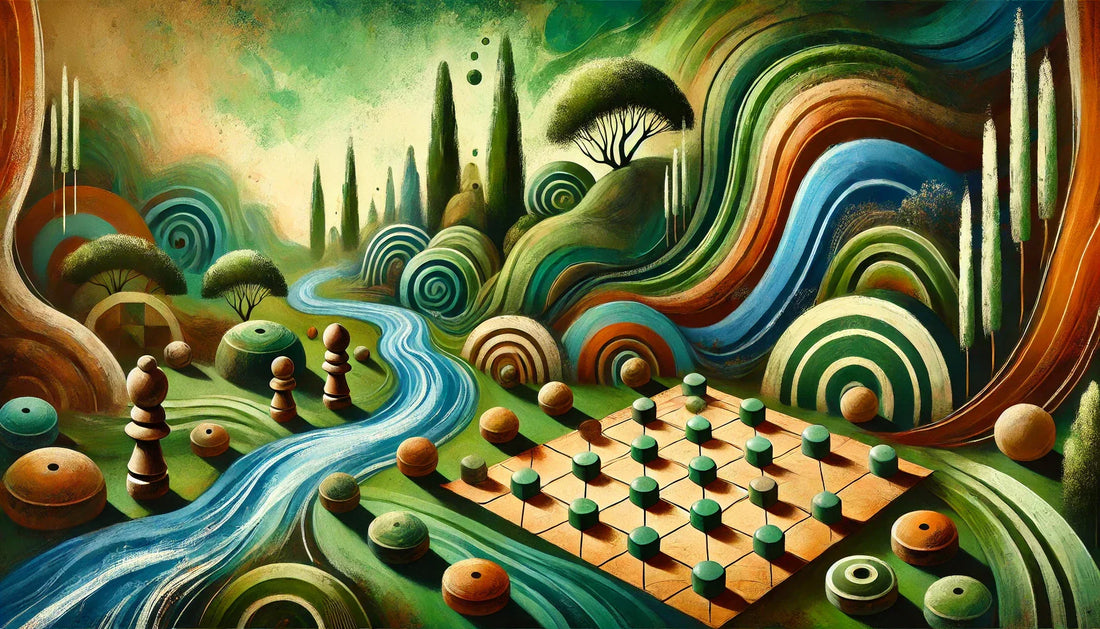
Sustainable Gaming: Embracing Tradition and Ecology Through Board Games
Share
Check Out All The Handcrafted Indian Traditional Board Games Here
In today's rapidly modernizing world, the need to embrace sustainable practices has never been more urgent. As concerns about environmental degradation and resource depletion continue to grow, many are turning towards more eco-friendly lifestyles, seeking to harmonize modern life with environmental consciousness. One area where tradition and sustainability intersect beautifully is in the realm of board games, particularly traditional Indian games that have been enjoyed for centuries. These games, beyond providing entertainment, carry with them lessons of sustainability, cultural heritage, and ecological awareness.
The Timeless Appeal of Traditional Board Games
Traditional board games such as Chowka Bara, Pagade, and Aadu Huli have been played across generations in India. Unlike their modern plastic counterparts, many of these games are made using natural materials like wood, cotton, and stones. Roll the Dice, for instance, offers game sets made from eco-friendly materials such as sustainably sourced wood and organic fabric mats, promoting both cultural preservation and environmental responsibility.
Environmental Benefits of Traditional Game Materials
The choice of materials in traditional games is no accident. Historically, games were crafted from readily available local materials, minimizing environmental impact long before the concept of a carbon footprint became a global concern. For example, the wooden game pieces used in Navakankari or the cotton mats for Chowka Bara are both biodegradable and renewable, contrasting sharply with the petroleum-based plastics that dominate the modern toy industry.
Cultural Sustainability and Ecological Awareness
Embracing traditional games is also a way to foster cultural sustainability. Each game is a repository of local knowledge, skills, and traditions. By promoting and playing these games, communities can keep their unique cultures alive, resisting the homogenizing effects of globalization. Moreover, traditional games often mimic natural cycles and ecological balances, subtly educating players about the importance of harmony with nature. For example, the game Aadu Huli, also known as Tigers and Goats, simulates a delicate balance between predators and prey, reflecting ecological relationships found in nature.
Modern Adaptations for Broader Appeal
Recognizing the potential of traditional games to promote sustainability, companies like Roll the Dice have innovated to make these games more appealing to a global audience. This includes designing portable and durable versions that retain the use of traditional materials while ensuring they meet modern aesthetic and functional standards. These adaptations help introduce these cultural treasures to new audiences, expanding their appeal without compromising on environmental values.
Educational Opportunities and Environmental Consciousness
Integrating these games into educational settings can be profoundly impactful. Schools and educational organizations can use traditional games to teach concepts of strategy, probability, and critical thinking, along with lessons on environmental science and sustainability. Roll the Dice, for instance, offers resources and workshops aimed at educators and students to explore how these games connect to broader ecological and cultural narratives.
The Role of Consumers and Communities
As consumers become more environmentally conscious, there is growing interest in products that are not only eco-friendly but also culturally enriching. Consumers are encouraged to support businesses that adhere to sustainable practices and promote cultural diversity. This consumer interest drives more businesses to consider sustainability in their product design and company ethics, creating a positive feedback loop between culture, commerce, and conservation.
A Game Worth Playing
The resurgence of traditional board games offers more than just a nod to nostalgia. It is a forward-looking approach to sustainability that respects the past while building a more sustainable future. For those interested in incorporating these environmentally friendly games into their lives or learning more about the fusion of tradition and ecology, visit Roll the Dice.
Through such efforts, we can hope to create a world where play and preservation go hand in hand, teaching future generations the value of both cultural heritage and environmental stewardship.
For those interested in exploring further, consider visiting external resources like this article on sustainable toy manufacturing and the Global Association for Cultural Education, which offers insights into how cultural activities can contribute to sustainable development goals.
By choosing to engage with and support traditional games, individuals can take an active role in promoting sustainability, encouraging a market that values ecological integrity and cultural diversity. This choice, seemingly simple yet profoundly impactful, is indeed a game worth playing.
